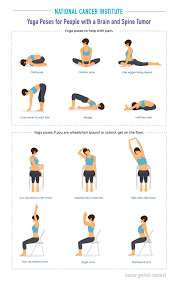Whether you’re a beginner or a seasoned yogi, choosing the right yoga mat can make a huge difference in your practice. A high-quality yoga mat provides comfort, stability, and durability to support your movements. In the best yoga mat we’ll explore the key factors to consider when selecting the best yoga mat for your needs.
Key Factors to Consider
1. Thickness & Cushioning
The thickness of a yoga mat plays a crucial role in comfort and stability.
- Thin Mats (1-3mm): Best for balance-focused practices like Vinyasa or Ashtanga yoga.
- Standard Mats (4-5mm): Provide a balance between comfort and stability.
- Thick Mats (6mm+): Ideal for those needing extra cushioning, such as individuals with joint pain or those practicing restorative yoga.
2. Material & Durability
Yogy come in various materials that affect their grip, durability, and eco-friendliness.
- PVC: Highly durable with excellent grip, but not the most eco-friendly option.
- TPE (Thermoplastic Elastomer): More environmentally friendly than PVC while maintaining decent durability.
- Natural Rubber: Eco-friendly, non-toxic, and offers excellent grip.
- Cork: Naturally antimicrobial and provides a firm, non-slip surface.
- Jute: Sustainable and offers a unique, textured grip.
— Best Yoga Mat For Hot Yoga (@Bestyogamat) May 6, 2018
3. Grip & Texture
A non-slip surface is essential to maintain stability during poses. Look for:
- Smooth-textured mats: Provide a soft feel but may become slippery with sweat.
- Textured mats: Offer better traction, making them suitable for intense or sweaty practices.
- Open-cell vs. Closed-cell: Open-cell mats absorb moisture for better grip, while closed-cell mats repel sweat and are easier to clean.
4. Portability & Weight
- Lightweight mats: Ideal for travel and easy transport.
- Heavier mats: Provide better stability but are less convenient to carry.
Top Yoga Mats to Consider
- Liforme Yoga Mat – Excellent grip, eco-friendly, and comes with alignment markers.
- Manduka PRO Yoga Mat – Durable, high-density cushioning, and ideal for long-term use.
- Gaiam Essentials Yoga Mat – Budget-friendly with decent cushioning.
Maintenance Tips for Longevity
- Clean your mat regularly with a gentle, natural cleanser.
- Store it in a cool, dry place away from direct sunlight.
- Avoid folding; roll it up to prevent creases.
Conclusion
Choosing the best yoga mat depends on your practice style, comfort needs, and material preferences. Investing in the right mat can enhance your experience and provide the support necessary for a fulfilling yoga journey. Take the time to find a mat that suits your needs and enjoy a more comfortable, stable practice.




 UK Kindness Schools' Ambassador (@KindnessCoach_)
UK Kindness Schools' Ambassador (@KindnessCoach_) 




 on how to get started:
on how to get started: 
